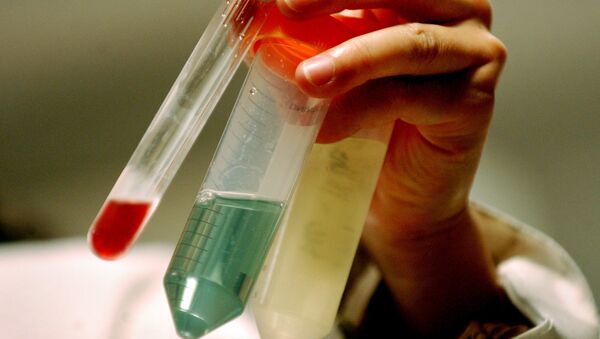The authors of the fundamental study believe that their findings may potentially help diagnose and treat cancer. The study results were published in the scientific publication Journal of Materials Chemistry B.
“Magnetite-gold nanohybrids are structures consisting of gold (Au) and magnetite (Fe3O4) nanoparticles. Magnetite nanoparticles provide the necessary magnetic properties, while gold nanoparticles contribute to making flexible chemical modifications possible, as well as provide the entire complex structure (dimer) with unique optical properties", Maxim Abakumov, research participant, Head of the Biomedical Nanomaterials Laboratory at NUST MISIS, said.
Nanohybrid properties make it possible to use them in targeted drug delivery to certain types of cells, as well as in diagnosing tumours, for example, using magnetic resonance imaging.
The scientists have conducted a detailed study of the formation mechanism for dimeric magnetic magnetite-gold nanoparticles. According to the authors of the study, their findings make it possible to control the nanoparticles’ size and shape due to the ability to control the paramters of a chemical reaction.
The researchers said they have looked at the origin, growth, and faceting of magnetite-gold nanohybrids by taking liquid samples from the reaction mixture during synthesis.
“We observed two successive processes during magnetite formation. Firstly, spherical magnetite nanoparticles start growing during heating. Secondly, iron oxide nanoparticles gradually take the shape of octahedrons at the boiling stage with a constant volume of nanoparticles", Ulf Widwald, research participant and associate professor at the University of Duisburg-Essen, said.
During synthesis, primary gold nuclei appear as a result of a reaction at temperatures below 220°C, followed by magnetite nucleation on the surface of gold nanocrystals, which is observed at temperatures ranging from 240 to 280°C.
The work is fundamental. The results obtained can help optimise dimeric nanoparticle synthesis, which will facilitate their manufacturing application, and simplify the scaling process.
The study also involved scientists from Lomonosov Moscow State University, the Mendeleev University of Chemical Technology, and Pirogov Russian National Research Medical University.


